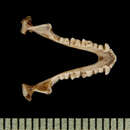Biology
provided by Arkive
Bats are the only true flying mammals. In Britain, they are insectivorous (eat insects), and contrary to popular misconception they are not blind; many can actually see very well (6). All British bats use echolocation to orient themselves at night; they emit bursts of sound that are of such high frequencies they are beyond the human range of hearing and are therefore called 'ultrasound' (7). They then listen to and interpret the echoes bounced back from objects, including prey, around them, allowing them to build up a 'sound-picture' of their surroundings (7).
Noctule bats produce echolocation calls of frequencies between 25 and 45 kHz (5). They emerge relatively early, often when it is still light (2). They hunt for moths, beetles and other large flying insects with fast, high flight, making rapid turns and diving frequently (2).
The noctule migrates to the south or southwest during autumn, in order to escape the worst of the harsh winter weather, although not all individuals migrate (6). Mating takes place between August and October (2); during this time a single male defends a mating roost of 4 to 5 females against other males (2). Fertilisation is delayed until the following spring (6), as females store sperm inside their uterus (womb) during the winter hibernation (8), which occurs between October and early April (2). During early summer males and females live together in summer roosts, but females begin to gather into maternity roosts of 20-50 (rarely up to a few hundred) females after late May (2). During this time males live in small groups (2). In England, a single young is usually produced in June or early July; the young can fly at 4 weeks of age and reaches independence at around 7 weeks (2). Noctule bats are known to live to a maximum of 12 years of age (2).
Conservation
provided by Arkive
In Britain, bats benefit from a very comprehensive level of legal protection (4). Under the Wildlife and Countryside Act it is illegal to intentionally kill, injure, take or sell a bat, posses a live bat or part of a bat, to intentionally (or in England and Wales, recklessly) damage, obstruct or destroy access to bat roosts. Under the Conservation Regulations it is an offence to damage or destroy breeding sites or resting places. Fines of up to £5,000 for every bat affected, and up to six months imprisonment are in place for these offences (3). Several species of bat can also benefit by bat boxes put up by the public, which can provide roosting sites.
Description
provided by Arkive
The noctule is one of the largest bats in Europe (7). It has long, narrow wings (2), and the short fur lies close to the body. The back is reddish-brown and develops a glossy sheen during summer. The belly is a duller, lighter brown (2). Juveniles are darker than adults, and have pale brown backs (2). The wing membranes, nose and broad triangular-shaped ears are blackish-brown (2).
Habitat
provided by Arkive
This species favours open habitats (7) and is found in woodland, large parks (2), wetlands, pasture land and large gardens (7). Maternity colonies occur mainly in tree-holes, summer roosts have also been found in bat boxes, hollow streetlights, and bridges. Hibernation takes place in hollow trees, crevices in rocks, and buildings (2).
Range
provided by Arkive
Occurs throughout much of Europe including England and Wales, but is absent from northern Scotland, Ireland, and north Scandinavia (5). Although it has a fairly wide distribution in England and Wales, it is not a common species (7).
Status
provided by Arkive
In Great Britain, all bats are fully protected under Schedule 5 of the Wildlife and Countryside Act (1981) as amended, and by the Conservation (Natural Habitats etc) Regulations (1994). An agreement on the Conservation of Bats in Europe (EUROBATS) under the auspices of the Bonn Convention, also known as the Convention on Migratory Species (CMS) is in force, and all European bats are listed under Appendix II of the CMS (4).
Threats
provided by Arkive
Like all bats, the noctule is vulnerable to a number of threats, including the loss of roost sites; hollow trees are often felled if thought unsafe or 'untidy'. Habitat change and loss, affecting the availability of insect prey and causing the fragmentation of feeding habitat is a serious problem for many bats, furthermore pesticide use has devastating effects, by causing severe declines in insect prey abundance, and contaminating food with potentially fatal toxins (4).

